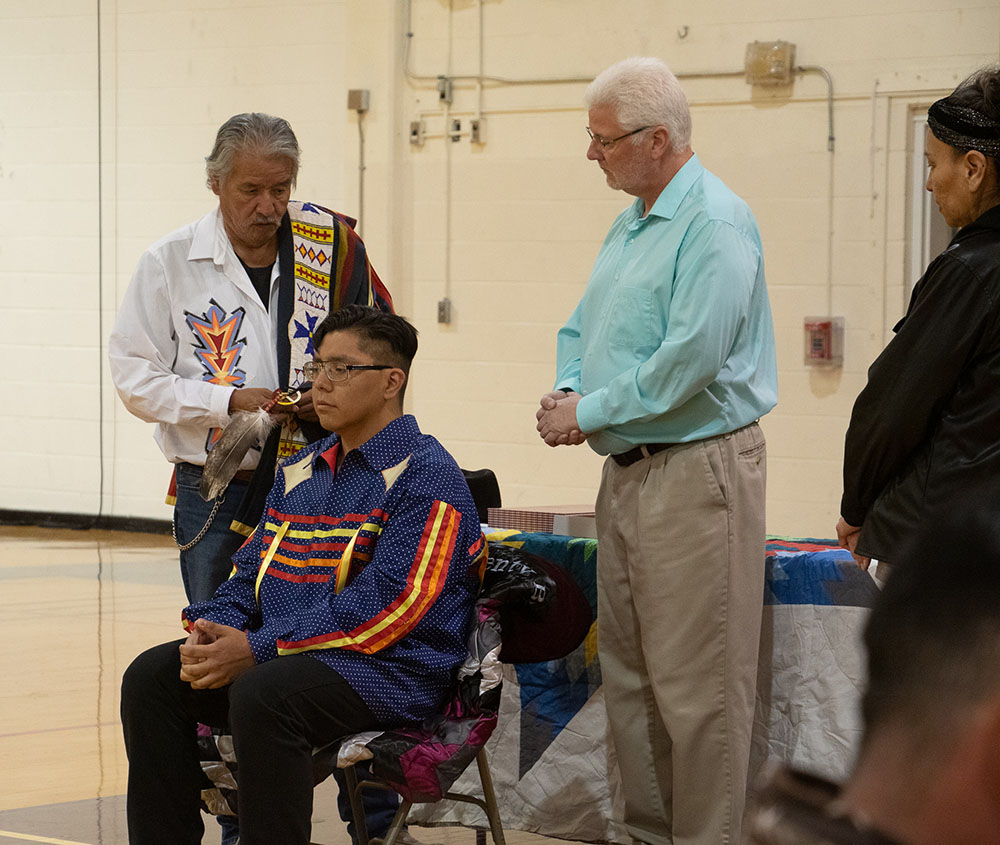Recognition and Reconciliation
Background
Chadron State College occupies land that, for centuries, has nurtured and supported Indigenous nations. In particular, the United States federal government recognized these territories as indigenous to the Arapahoe, Cheyenne, Dakota, Lakota, and Nakota nations in the Treaties of Fort Laramie in 1851 and 1868. In 1980, the Supreme Court ruled in “United States v. Sioux Nation of Indians” that the government had illegally taken land in the Black Hills reserved by the 1868 treaty. We recognize that these tribes, and many other Indigenous communities that have called this region home, have therefore been fraudulently dispossessed of their traditional homelands. Furthermore, as a Nebraska state college, the dispossession of Omaha, Pawnee, Ponca, and Otoe-Missouria nations has materially benefited the campus and region. Chadron State College commits itself to recognizing this unjust enrichment, and through individual and collective efforts seeks to reconcile historical and contemporary injustices against Native people.
Land Acknowledgement Statement
We acknowledge that Chadron State College is situated on the land of multiple Native nations, past and present. These original homelands are the territory of Indigenous peoples who were largely dispossessed and removed. We specifically acknowledge these are the traditional homelands of the Lakota, Cheyenne, and Arapaho people.
Chadron State College pledges to support and advocate for the histories, cultures, languages, and territorial rights of historic and contemporary indigenous peoples of this region. This statement affirms continuous Indigenous presence and rights, acknowledges the ongoing effects of settler colonization, and supports Indigenous struggles for political, legal, and cultural sovereignty.
In Lakota:
Makȟóčhe Wótȟawa Wóeye
Čhápa Wakpá Otȟúŋwahe Owáyawa-Waŋkátuya kiŋ lé Ikčé Oyáte tóna tȟa-mákȟočhepi (eháŋni na leháŋl) él hé. Makȟóčhe kiŋ lená oyáte k'uŋ hená tȟáwapi tkȟá yuŋkȟáŋ hená paȟéyab iyéwičhayapi na wašíču kiŋ makȟóčhe k'uŋ tȟáwaič'iyapi. Oyátepi uŋ hená lená épi: Lakȟóta kiŋ épi na Šahíyela kiŋ épi na Maȟpíyatȟo Oyáte kiŋ.
Čhápa Wakpá Otȟúŋwahe Owáyawa-Waŋkátuya kiŋ lé oyátepi uŋ hená tȟóuŋyepi kiŋ é na tȟa-íyapi kiŋ é na eháŋni-wičhóoyake tȟáwapi kiŋ é na eháŋni na leháŋl makȟóčhe-wóiyowaža tȟáwapi kiŋ nawíčhuŋkičižíŋpi kta uŋkíč'ičhuŋzapi. Wóeye kiŋ lé úŋ táku kiŋ lená uŋyáwičakȟapi: Oyáte uŋ hená eháŋnitaŋhaŋ makȟóčhe kiŋ lél úŋpi na wóiyowaža yuhápi, wašíču kiŋ tȟéhaŋ na leháŋhuŋniyaŋ Ikčé Oyáte kiŋ pahúkhul wičháyuzapi, na oyáte k'uŋ wóitȟaŋčhaŋ ogná na wóopȟe ogná na wičhóuŋ ogná iglúhapi okíhipi ye(ló).

Steve Dubray, medicine man and uncle of Vernon Plenty Bull, left, explains the eagle feather-tying ceremony. Mark Hunt, CSC Security Supervisor and Plenty Bull's work supervisor, right, during the ceremony April 28, in Armstrong Gymnasium. Photo courtesy of Tena Cook- Public Relations.
